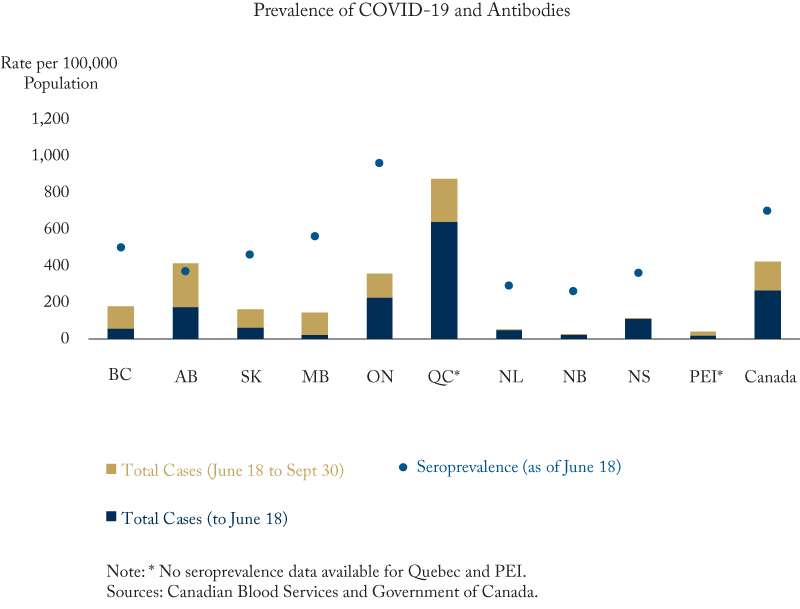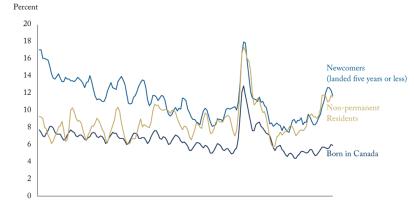At the outset of COVID-19, access to diagnostic testing was inconsistent and provinces employed different testing strategies to direct limited testing resources. Since the beginning of the outbreak, testing rates and access to testing have been improved across the country. Most COVID-19 testing has been for diagnostic purposes – to determine whether or not someone is currently infected. Another type of testing – serologic or antibody tests – can be used to determine whether or not someone has mounted an immune response to COVID-19. Those with the positive serological test results could be infected, recovered, or have had an asymptomatic infection.
This Graphic Intelligence shows the gap between test-confirmed cases of COVID-19 (bars) and the proportion of the population testing positive for COVID-19 antibodies (dots). In all provinces, the proportion of the population with positive serologic test results is significantly higher than the proportion diagnosed with COVID-19 (during the period to June 18, 2020). New Brunswick and Newfoundland and Labrador show the lowest population exposure to COVID-19. Alberta stands out as the province with both a high detection rate for COVID-19 through testing and successful containment (low proportion of the population developed an immune response, suggesting lower exposure).
Read the Latest Communiqué from the Working Group on Public Health and Emergency Measures





